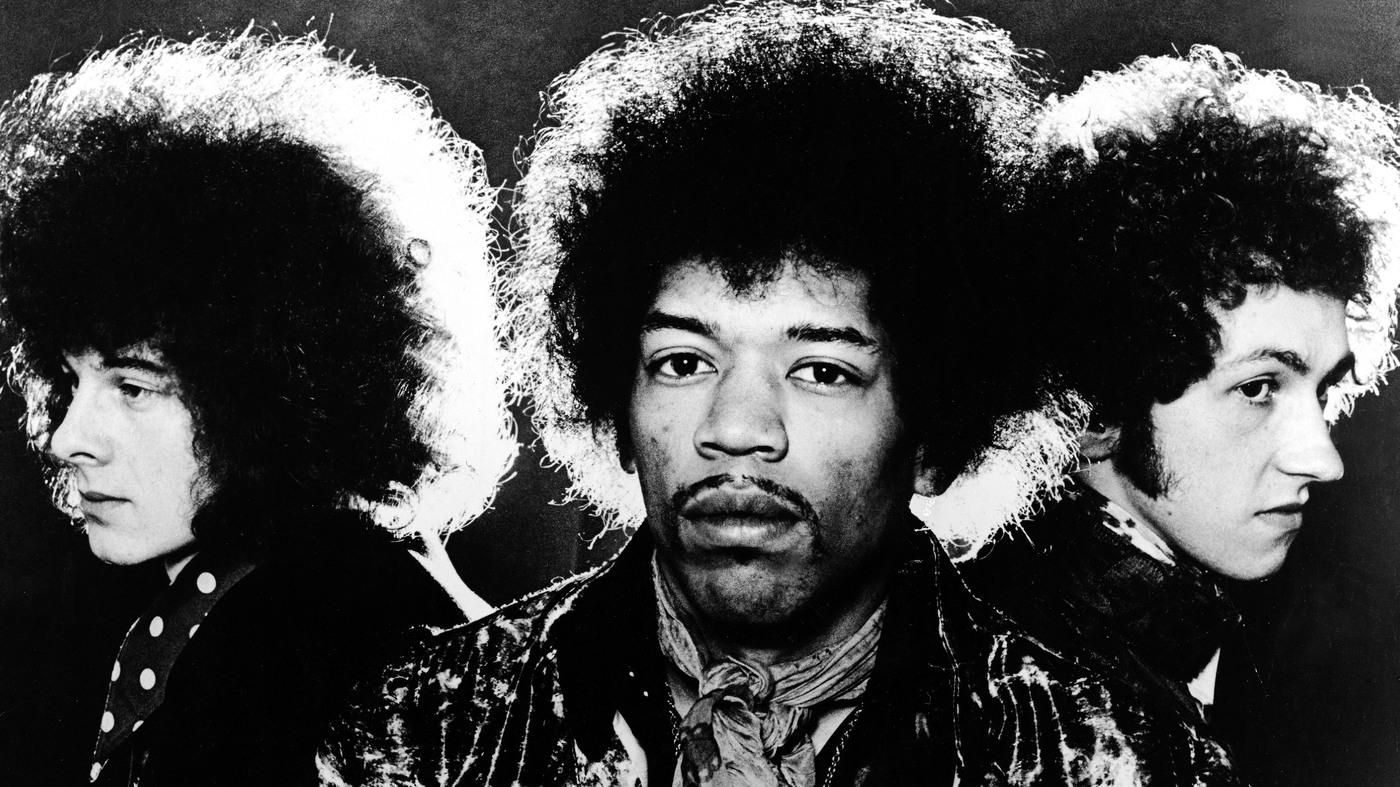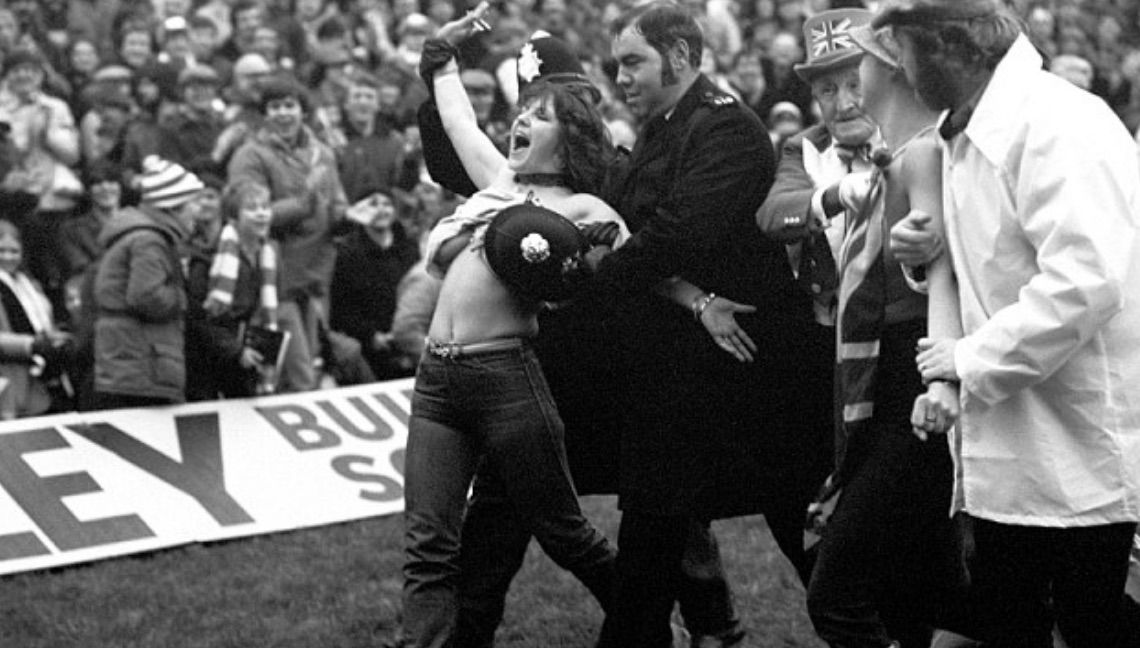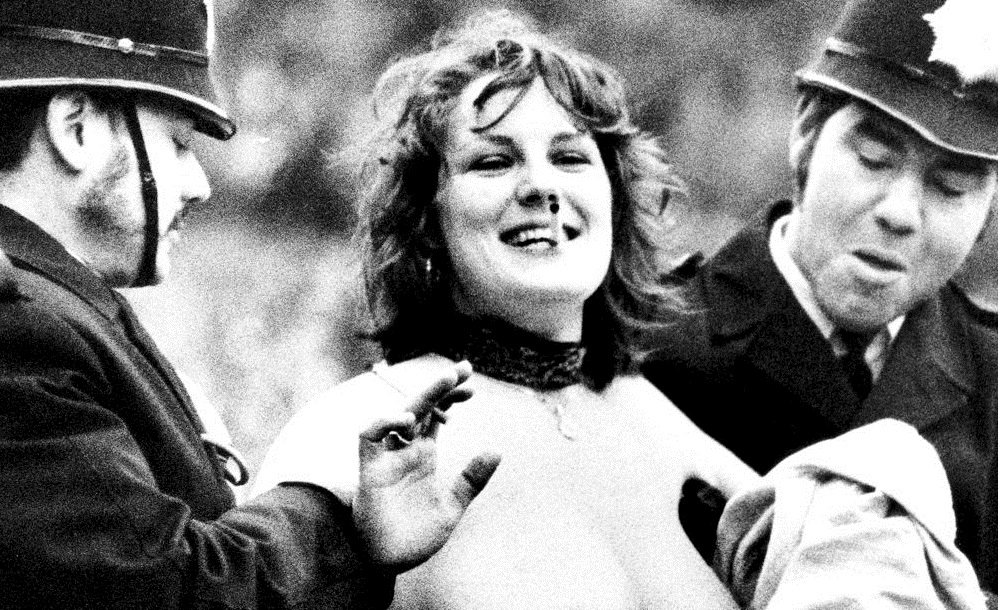You are using an out of date browser. It may not display this or other websites correctly.
You should upgrade or use an alternative browser.
You should upgrade or use an alternative browser.
On this day:
- Thread starter Singlemalt
- Start date
injinji
Well-Known Member
Thanks for the heads up. I'll add him to the dead musicians thread.RIP Leslie.

Leslie West, Mountain Guitarist Who Belted Out 'Mississippi Queen,' Dead at 75
Mountain co-founder and "Mississippi Queen" singer Leslie West has died at the age of 75.www.rollingstone.com
BarnBuster
Virtually Unknown Member
"A powerful earthquake off the coast of Sumatra, Indonesia, on December 26, 2004 sets off a tsunami that wreaks death and devastation across the Indian Ocean coastline. The quake was the second strongest ever recorded and the estimated 230,000 dead made this disaster one of the 10 worst of all time.
It was 7:58 a.m. when the tremendous quake struck beneath the Indian Ocean 160 miles west of Sumatra. Not only did it register at approximately a 9.3 magnitude (only the 1960 Chile earthquake measured higher at 9.5, though there may have been stronger tremors prior to the invention of seismographic equipment) and last nearly 10 minutes, the quake moved a full 750 miles of underwater fault line earth up to 40 feet. The movement of the earth–there is evidence that huge boulders weighing thousands of tons were pushed several miles along the ocean floor–caused a massive displacement of water. It is estimated that the resulting tsunami had two times the energy of all the bombs used during World War II.
Within 15 minutes, tsunami waves were crashing the coast of Sumatra. At the north end of the island was a heavily populated region known as Aceh. There, waves reached 80 feet high over large stretches of the coast and up to 100 feet in some places. Entire communities were simply swept away by the water in a matter of minutes. The death toll in Indonesia is estimated at between 130,000 and 160,000 people, with an additional 500,000 people left homeless. About a third of the victims were children.
The huge waves missed the coast of Indonesia on the north side and went on to Thailand, where between 5,000 and 8,000 people died. The tsunami also moved east across the Indian Ocean. In Sri Lanka, the tsunami came ashore about 90 minutes after the earthquake. Although the waves were not as high as in Aceh, they still brought disaster. Approximately 35,000 people lost their lives and half a million others lost their homes. In addition, about 15,000 people died in India. The killer waves even reached 5,000 miles away in South Africa, where two people perished.
In total, about 190,000 people are confirmed dead with another 40,000 to 45,000 missing and presumed dead. Although billions of dollars of humanitarian aid poured in to the affected region in the aftermath of the disaster–an estimated $7 billion within the first 18 months—some areas are still suffering from the massive devastation."
injinji
Well-Known Member
That was a bad one. But it did lead to updated early warning systems.
"A powerful earthquake off the coast of Sumatra, Indonesia, on December 26, 2004 sets off a tsunami that wreaks death and devastation across the Indian Ocean coastline. The quake was the second strongest ever recorded and the estimated 230,000 dead made this disaster one of the 10 worst of all time.
It was 7:58 a.m. when the tremendous quake struck beneath the Indian Ocean 160 miles west of Sumatra. Not only did it register at approximately a 9.3 magnitude (only the 1960 Chile earthquake measured higher at 9.5, though there may have been stronger tremors prior to the invention of seismographic equipment) and last nearly 10 minutes, the quake moved a full 750 miles of underwater fault line earth up to 40 feet. The movement of the earth–there is evidence that huge boulders weighing thousands of tons were pushed several miles along the ocean floor–caused a massive displacement of water. It is estimated that the resulting tsunami had two times the energy of all the bombs used during World War II.
Within 15 minutes, tsunami waves were crashing the coast of Sumatra. At the north end of the island was a heavily populated region known as Aceh. There, waves reached 80 feet high over large stretches of the coast and up to 100 feet in some places. Entire communities were simply swept away by the water in a matter of minutes. The death toll in Indonesia is estimated at between 130,000 and 160,000 people, with an additional 500,000 people left homeless. About a third of the victims were children.
The huge waves missed the coast of Indonesia on the north side and went on to Thailand, where between 5,000 and 8,000 people died. The tsunami also moved east across the Indian Ocean. In Sri Lanka, the tsunami came ashore about 90 minutes after the earthquake. Although the waves were not as high as in Aceh, they still brought disaster. Approximately 35,000 people lost their lives and half a million others lost their homes. In addition, about 15,000 people died in India. The killer waves even reached 5,000 miles away in South Africa, where two people perished.
In total, about 190,000 people are confirmed dead with another 40,000 to 45,000 missing and presumed dead. Although billions of dollars of humanitarian aid poured in to the affected region in the aftermath of the disaster–an estimated $7 billion within the first 18 months—some areas are still suffering from the massive devastation."
BarnBuster
Virtually Unknown Member
Did I read a while back that many of the EW buoys/sensors no longer function due to lack of maintenance etc?That was a bad one. But it did lead to updated early warning systems.
"A powerful earthquake off the coast of Sumatra, Indonesia, on December 26, 2004 sets off a tsunami that wreaks death and devastation across the Indian Ocean coastline. The quake was the second strongest ever recorded and the estimated 230,000 dead made this disaster one of the 10 worst of all time.
It was 7:58 a.m. when the tremendous quake struck beneath the Indian Ocean 160 miles west of Sumatra. Not only did it register at approximately a 9.3 magnitude (only the 1960 Chile earthquake measured higher at 9.5, though there may have been stronger tremors prior to the invention of seismographic equipment) and last nearly 10 minutes, the quake moved a full 750 miles of underwater fault line earth up to 40 feet. The movement of the earth–there is evidence that huge boulders weighing thousands of tons were pushed several miles along the ocean floor–caused a massive displacement of water. It is estimated that the resulting tsunami had two times the energy of all the bombs used during World War II.
Within 15 minutes, tsunami waves were crashing the coast of Sumatra. At the north end of the island was a heavily populated region known as Aceh. There, waves reached 80 feet high over large stretches of the coast and up to 100 feet in some places. Entire communities were simply swept away by the water in a matter of minutes. The death toll in Indonesia is estimated at between 130,000 and 160,000 people, with an additional 500,000 people left homeless. About a third of the victims were children.
The huge waves missed the coast of Indonesia on the north side and went on to Thailand, where between 5,000 and 8,000 people died. The tsunami also moved east across the Indian Ocean. In Sri Lanka, the tsunami came ashore about 90 minutes after the earthquake. Although the waves were not as high as in Aceh, they still brought disaster. Approximately 35,000 people lost their lives and half a million others lost their homes. In addition, about 15,000 people died in India. The killer waves even reached 5,000 miles away in South Africa, where two people perished.
In total, about 190,000 people are confirmed dead with another 40,000 to 45,000 missing and presumed dead. Although billions of dollars of humanitarian aid poured in to the affected region in the aftermath of the disaster–an estimated $7 billion within the first 18 months—some areas are still suffering from the massive devastation."
One of the reasons I left Alaska.
3 days after we departed a 7.5 magnitude struck. Fortunately no Tsunami was generated as I believe the quake was a slip strike.
injinji
Well-Known Member
I would not be surprised. I'm sure the budget for that sort of thing gets trimmed regularly. Humans are not good at looking too far ahead.Did I read a while back that many of the EW buoys/sensors no longer function due to lack of maintenance etc?
raratt
Well-Known Member
RIP Tony.

 pitchfork.com
pitchfork.com

Guitarist Tony Rice Dead at 69
The distinctive flatpicker was known as one of the greatest players in bluegrass
injinji
Well-Known Member
RIP Tony.

Guitarist Tony Rice Dead at 69
The distinctive flatpicker was known as one of the greatest players in bluegrasspitchfork.com
BarnBuster
Virtually Unknown Member
On December 29, 1890, in one of the final chapters of America’s long Indian wars, the U.S. Cavalry kills 146 Sioux at Wounded Knee on the Pine Ridge reservation in South Dakota.
Throughout 1890, the U.S. government worried about the increasing influence at Pine Ridge of the Ghost Dance spiritual movement, which taught that Native Americans had been defeated and confined to reservations because they had angered the gods by abandoning their traditional customs. Many Sioux believed that if they practiced the Ghost Dance and rejected the ways of the white man, the gods would create the world anew and destroy all non-believers, including non-Indians. On December 15, 1890, reservation police tried to arrest Sitting Bull, the famous Sioux leader, who they mistakenly believed was a Ghost Dancer, and killed him in the process, increasing the tensions at Pine Ridge.
On December 29, the U.S. Army’s 7th cavalry surrounded a band of Ghost Dancers under the Sioux Chief Big Foot near Wounded Knee Creek and demanded they surrender their weapons. As that was happening, a fight broke out between an Indian and a U.S. soldier and a shot was fired, although it’s unclear from which side. A brutal massacre followed, in which it’s estimated almost 150 Native Americans were killed (some historians put this number at twice as high), nearly half of them women and children. The cavalry lost 25 men.
The conflict at Wounded Knee was originally referred to as a battle, but in reality it was a tragic and avoidable massacre. Surrounded by heavily armed troops, it’s unlikely that Big Foot’s band would have intentionally started a fight. Some historians speculate that the soldiers of the 7th Cavalry were deliberately taking revenge for the regiment’s defeat at the Little Bighorn in 1876. Whatever the motives, the massacre ended the Ghost Dance movement and was the last major confrontation in America’s deadly war against the Plains Indians.
Conflict came to Wounded Knee again in February 1973 when it was the site of a 71-day occupation by the activist group AIM (American Indian Movement) and its supporters, who were protesting the U.S. government’s mistreatment of Native Americans. During the standoff, two Native Americans were killed, one federal marshal was seriously wounded and numerous people were arrested.
(20 Medal's of Honor were awarded during this massacre. There is a bill in congress "Remove the Stain Act" to rescind the Medals. bb)

Sen. Warren: Revoke Medals of Honor Awarded to Troops in 'Wounded Knee' Massacre
The amendment is similar to the "Remove the Stain Act" introduced in the House and Senate last November.
Last edited:
raratt
Well-Known Member
Bob Seger Pays Tribute to Saxophonist Alto Reed After Bandmate’s Death
"I may have been the leader, but he was our rock star," singer says of Silver Bullet Band member, who died Wednesday following a battle with colon cancer
injinji
Well-Known Member
Damn it, I'm tired of our icons dying. I was watching a tribute to the folks who died in 2020 and it was about five minutes long with a really short clip for each one. I'm sure there will be a couple three more die today, but after that, I'll be glad to get this year behind us.
Bob Seger Pays Tribute to Saxophonist Alto Reed After Bandmate’s Death
"I may have been the leader, but he was our rock star," singer says of Silver Bullet Band member, who died Wednesday following a battle with colon cancerwww.yahoo.com
Me too damnit! We even lost Mary Ann FFS.

 www.hollywoodreporter.com
www.hollywoodreporter.com

Dawn Wells, Mary Ann on ‘Gilligan’s Island,’ Dies at 82
Dawn Wells, the girl-next-door actress and former beauty queen who played the sweet Mary Ann Summers on the iconic CBS sitcom 'Gilligan's Island,' has died. She was 82.
injinji
Well-Known Member
It was also the day after 1968 (the most influential year in rock and roll history) ended.On this day in 1969 it was the first day of 69 which was nice.

Why Is The Music Of 1968 So Enduring? 'It Was Allowed To Be Art'
Half a century later, 1968 continues to resonate as a landmark year for rock, pop and soul — in part, say musicians who were there in the studio, because artists were trying things no one had before.
cannabineer
Ursus marijanus
I can imagine being exhausted and hurtin’ by day 70 of 69.On this day in 1969 it was the first day of 69 which was nice.
lokie
Well-Known Member
1/2/1982


With a police helmet covering her assets, Erika Roe is escorted from the pitch. Photo: Press Association
Erika Roe (born 1957), also known as the Twickenham Streaker, is remembered for a topless run across the pitch of Twickenham Stadium during an England vs. Australia rugby union match on 2 January 1982. It has been described by the BBC as "perhaps the most famous of all streaks."[1] Roe, who later attributed the inspiration to alcohol, ran onto the field during half time, exposing her 40-inch (100 cm) bosom.[2] Roe and Sarah Bennett, the friend who joined her streak,[3] were corralled by officials. Her breasts were covered by "a ridiculous man, with his [Union Jack] flag".[4]



With a police helmet covering her assets, Erika Roe is escorted from the pitch. Photo: Press Association
Erika Roe (born 1957), also known as the Twickenham Streaker, is remembered for a topless run across the pitch of Twickenham Stadium during an England vs. Australia rugby union match on 2 January 1982. It has been described by the BBC as "perhaps the most famous of all streaks."[1] Roe, who later attributed the inspiration to alcohol, ran onto the field during half time, exposing her 40-inch (100 cm) bosom.[2] Roe and Sarah Bennett, the friend who joined her streak,[3] were corralled by officials. Her breasts were covered by "a ridiculous man, with his [Union Jack] flag".[4]

Gotta appreciate her moxie.
(Not to mention dimensions)
(Not to mention dimensions)
Similar threads
- Replies
- 105
- Views
- 12K
- Replies
- 324
- Views
- 26K

